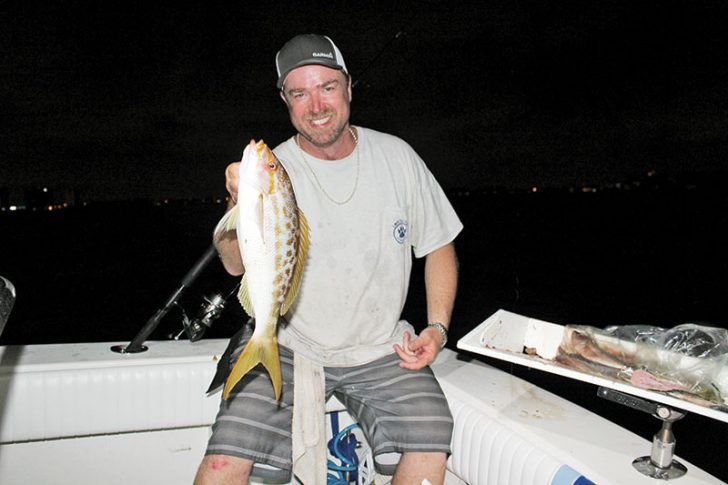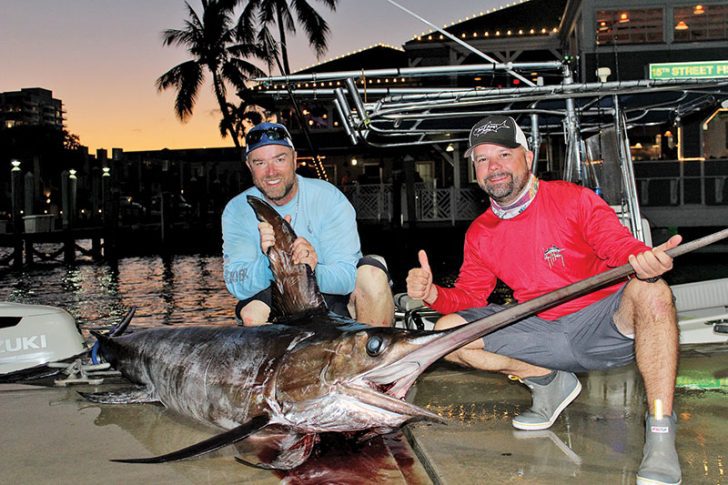With peak summer heat indexes in the triple digits, it’s time to switch gears and focus on the night bite. There are two types of offshore fisheries that we can target in the dark, anchoring on the reef for snapper or drifting way offshore for swordfish.

Swordfishing can also be fun, but it involves a little more patience and some heavier gear. I fish three or four 50wide outfits spooled with 60 pound mono, backed with 60 pound braid. You’re going to need some buoys, some glow sticks, lead from 16 to 32 ounces, some deep drop lights, rubber bands, a line counter and baits. A glow light is also a good addition but not a necessity. I like using large whole squid rigged with a 10/0 in line J hook. There are several ways to rig them or you can purchase them pre rigged. Live goggle eyes or blue runners make great bridled baits too. My first rod deployed will be the furthest from the boat. It will get a water activated light about 15 to 20 feet from the bait, secured to the mainline with a rubber band. Then about 20 feet from that, the lightest lead is secured with a rubber band. From there I will use my line counter and set that bait at the shallowest depth, normally around the 75 foot mark. I’ll then secure a buoy with a rubber band and attach a glow stick to it. I will continue deploying baits, adding weight and depth as I go along. By the last bait, I’m near 36 ounces of lead and the bait is down around 300 feet, which puts my baits 75, 150, 225 and 300 feet. This is only a guideline and you can certainly set shallower or deeper. Watch your sounder for the thermocline depth, as you’ll find the fish will stick around that depth. Having a bait near it can be the deal maker.
As always, be safe and catch ’em up! Feel free to reach out with any questions or to book a trip.
Capt. Ryan Palmer
Family Jewell Fishing Charters
954-882-2631
www.fjsportfishing.com


